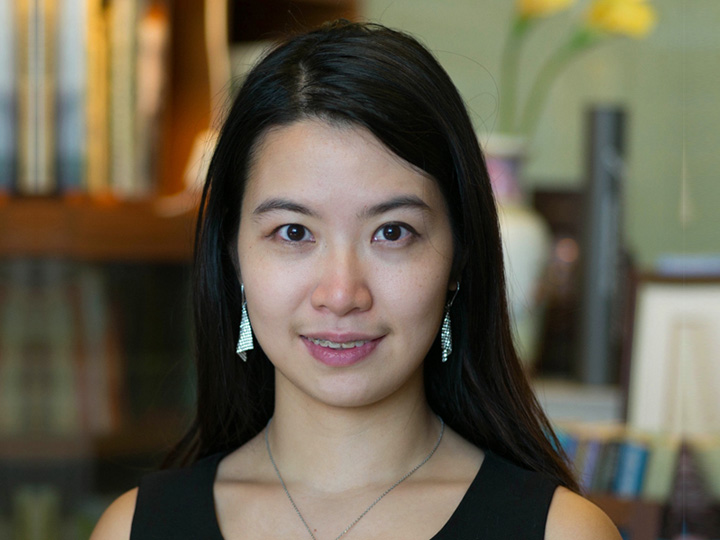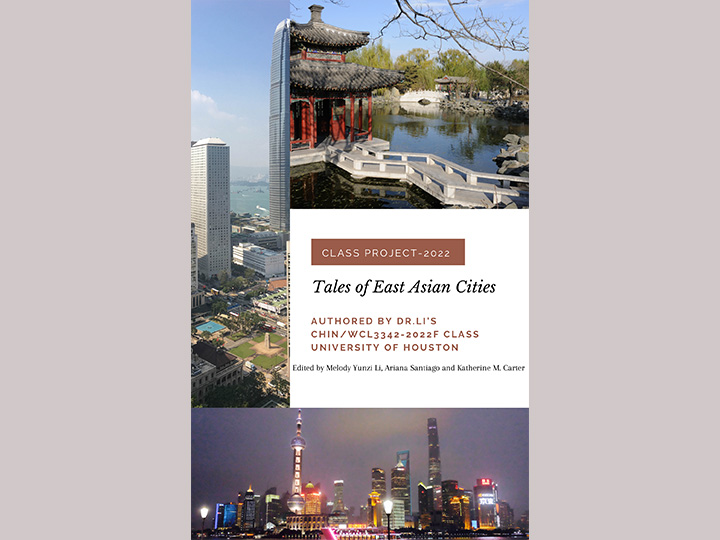


Melody Yunzi Li, assistant professor of Chinese in the UH College of Liberal Arts and Social Sciences, collaborated with open educational resources (OER) librarians Katherine Carter and Ariana Santiago to create the first OER student-authored publication by UH Libraries. The final project of five classes, the digital textbook encompasses the written work of students enrolled in Tales of East Asian Cities this past fall.
“I enjoy teaching these cultural classes because they are often of a very diverse student community,” said Li, Modern and Classical Languages faculty member. “I always feel like there are so many different perspectives that can enlighten each other. My core structure developed into an online class during the pandemic, so this is already outlined in the structure of a book, broken apart into units or chapters.”
Providing free teaching, research and learning materials in the public domain or with an open license, OER materials are more versatile than copyrighted content. An OER textbook can be legally shared, printed and saved for reuse by anyone. It is also adaptable to fit teaching needs, allowing examples to be added and content to be rearranged and even rewritten.
“This will be beneficial in multiple ways,” Santiago, head of the UH Libraries OER department, said. “The flexibility of open educational resources has prompted us to work with instructors who want to take advantage of its adaptability or possibly provide students with a class that is more affordable by eliminating the textbook.”
Students developed critical analysis based on one of six East Asian cities: Taipei, Beijing, Tokyo, Seoul, Shanghai and Hong Kong. Throughout the course, they developed tour guide presentations and research in their cities. Each also wrote a critical analytical essay on the cultural phenomenon, movie or literature related to their assigned city.
Students were grouped into different cities for their project, and every two weeks, they did a tour guide presentation before the class. Every chapter has a collaborative introduction based on their tour guide presentation. History, geography, economy and facts about the culture of their city was gathered to vividly convey a people, location and theme critically analyzed and assessed.
“This shifts their thinking about what they turn in,” Li noted. “They know that others, peers instead of just a professor, will be looking over their work and that it is not going away. Instead, it is a renewable assignment consistently evaluated.”
Students practiced open pedagogy, a high-impact practice of experiential learning. As creators of information, rather than simply consumers, they gained a deeper understanding of the responsibilities associated with information ownership to make informed decisions about intellectual property.
“It's exciting to see innovative teaching methods that incorporate student co-creation of open educational resources,” Santiago noted. “We hope to continue supporting instructors with similar projects.”
The open educational practice challenges traditional teaching roles and has the power to transform the educational experience for both teachers and students. By the end of 2022, students had an edited volume of essays, the summation of their weekly presentations and final projects.
“As an educator, my role is simply as the mediator, working to inspire students to discover what they like and enjoy,” Li stated. “This student project is perfect because they have so much freedom to create, to find their own voice by being the authors.”